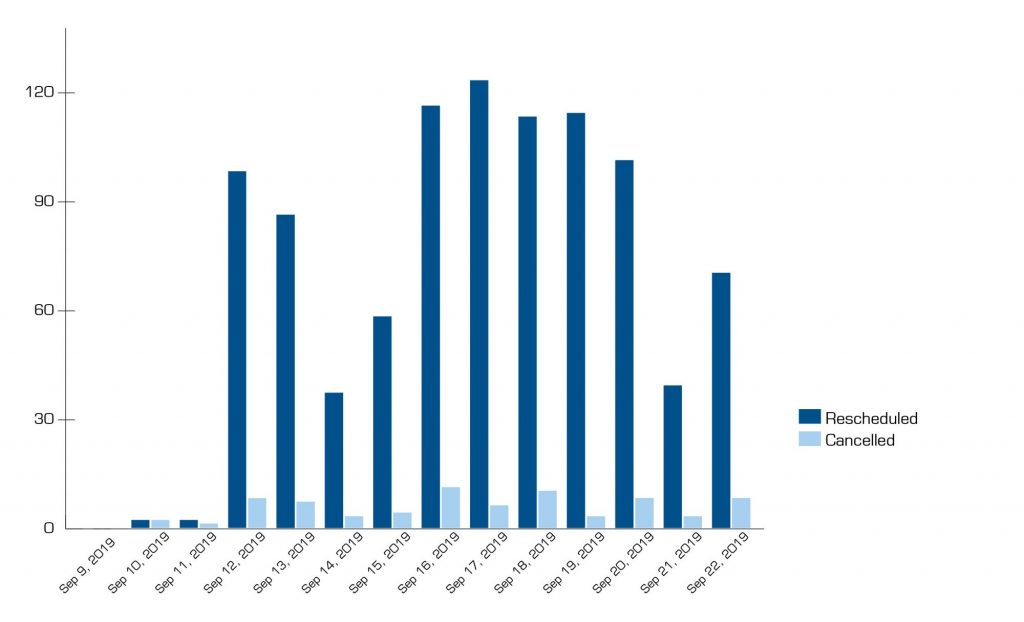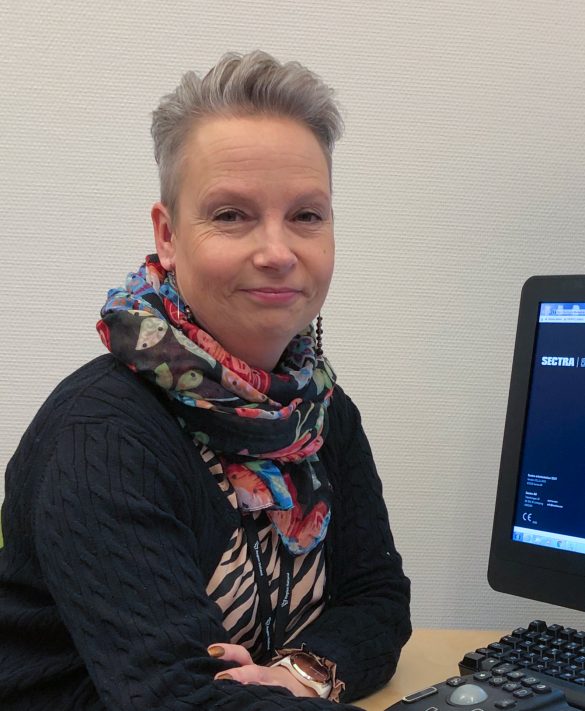Results
Between September 9 and 22, 2019, a total of 7,095 women were called in for a screening. Of this number, 959 appointments were rescheduled and 74 cancellations were made by women themselves via the web (corresponding to 15% of the total number of bookings made). The number of rescheduled and cancelled appointments are visualized in chart 1.
According to the interview with Camilla Larsen, the administration of each email takes approximately ten minutes. Assuming that all the women who rescheduled or cancelled their appointments themselves would instead have sent an email directly to the provider, the total time savings for the two weeks in September was 10,330 minutes [(959 reschedules + 74 cancellations) × 10 minutes]. This equals 172 hours for these two weeks—or 4,476 hours for a whole year, which can be translated into a time saving corresponding to three full-time employees (assuming 1,500 hours per year per employee).

Chart 1: Rescheduled and cancelled appointments made via the web service during the period September 9–22.
Validity check
To validate this result, we also performed an estimate based on the customer’s own perceived experience of the time savings achieved. For this validation check, Region Halland provided us with a number of 50 to 70 emails received per day (10 minutes per email) prior to the implementation of Sectra Scheduling. The number of phone calls was more than double this figure, totaling approximately 300 to 400 per month (five minutes per call).
Using the average of these numbers gives us a time savings of 60 emails × 10 minutes × 31 days per month + 350 calls per month × 5 minutes = 20,350 minutes per month, corresponding to 339 hours per month, and 4,070 hours per year. This is equivalent to a time savings corresponding to about 2.7 full-time employees. Hence, the estimate based on two weeks of data from Sectra Monitoring seems realistic.
Discussion
In total, the time savings using Sectra Scheduling turned out to be substantial, allowing the provider to spend resources on more valuable tasks. The implementation was also very well received by the secretaries themselves. Camilla Larsen said the front desk staff at Region Halland are thrilled about not having to spend as much time on administrative work.
However, we did not estimate the cost savings achieved by reducing the number of patient no-shows, which might be the biggest benefit for many care providers. According to one American study [1], the number of patient no-shows averages 2–5% of the total number of patients booked, which represents a major cost for providers. Camilla Larsen estimated that the number of women who do not turn up for their appointments was around 10–15%, which leads to unused equipment and inefficiencies.
Research also shows that engaging patients more in their scheduling has significant effects on reducing patient no-shows. For example, a 2009 American College of Physicians study [2] found that letting patients manage their own scheduling led to a far greater likelihood that they would show up for their appointments.
“Out of 11,000 patients, those who were asked for their preferred visit time were far more likely to appear for the appointment.” [3]
In the same study, the author concluded: “We were really, really shocked the first time we went through the data and found out that the maker of the appointment controlled as much as one-third of the probability of whether the patient would show up.”
Another important parameter to take into consideration is the difference in cost savings between screening and clinical patients. In this study, we focused on women called in for screening, where no-shows primarily result in costs for the booked radiology equipment. The situation becomes much more costly for clinical cases where a no-show has a broader negative impact on the entire care process. In general, for these examinations image acquisition takes longer, the examinations are more complex, more radiology nurses are required, and a radiologist has already been assigned for reporting.
Future studies are needed to estimate the cost and time savings when it comes to no-shows. However, this study concluded that a significant amount of time can be saved looking exclusively at the time saved for the front desk personnel in terms of managing calls and emails.



